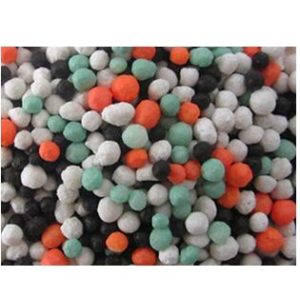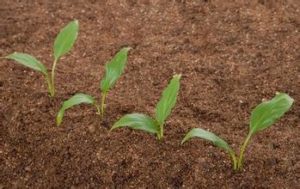Development Process of Fertilizer
Fertilizer is a substance added to soil to improve plants’ growth and yield. First used by ancient farmers, fertilizer technology developed significantly as the chemical needs of growing plants were discovered. Modern synthetic fertilizers are composed mainly of nitrogen, phosphorous,  and potassium compounds with secondary nutrients added. The use of synthetic fertilizers has significantly improved the quality and quantity of the food available today, although their long-term use is debated by environmentalists.
and potassium compounds with secondary nutrients added. The use of synthetic fertilizers has significantly improved the quality and quantity of the food available today, although their long-term use is debated by environmentalists.
Like all living organisms, plants are made up of cells. Within these cells occur numerous metabolic chemical reactions that are responsible for growth and reproduction. Since plants do not eat food like animals, they depend on nutrients in the soil to provide the basic chemicals for these metabolic reactions. The supply of these components in soil is limited, however, and as plants are harvested, it dwindles, causing a reduction in the quality and yield of plants.
Fertilizers replace the chemical components that are taken from the soil by growing plants. However, they are also designed to improve the growing potential of soil, and fertilizers can create a better growing environment than natural soil. They can also be tailored to suit the type of crop that is being grown. Typically, fertilizers are composed of nitrogen, phosphorus, and potassium compounds. They also contain trace elements that improve the growth of plants.
The primary components in fertilizers are nutrients which are vital for plant growth. Plants use nitrogen in the synthesis of proteins, nucleic acids, and hormones. When plants are nitrogen deficient, they are marked by reduced growth and yellowing of leaves. Plants also need phosphorus, a component of nucleic acids, phospholipids, and several proteins. It is also necessary to provide the energy to drive metabolic chemical reactions. Without enough phosphorus, plant growth is reduced. Potassium is another major substance that plants get from the soil. It is used in protein synthesis and other key plant processes. Yellowing, spots of dead tissue, and weak stems and roots are all indicative of plants that lack enough potassium.
a component of nucleic acids, phospholipids, and several proteins. It is also necessary to provide the energy to drive metabolic chemical reactions. Without enough phosphorus, plant growth is reduced. Potassium is another major substance that plants get from the soil. It is used in protein synthesis and other key plant processes. Yellowing, spots of dead tissue, and weak stems and roots are all indicative of plants that lack enough potassium.
Calcium, magnesium, and sulfur are also important materials in plant growth. They are only included in fertilizers in small amounts, however, since most soils naturally contain enough of these components. Other materials are needed in relatively small amounts for plant growth. These micronutrients include iron, chlorine, copper, manganese, zinc, molybdenum, and boron, which primarily function as cofactors in enzymatic reactions. While they may be present in small amounts, these compounds are no less important to growth, and without them plants can die.
Many different substances are used to provide the essential nutrients needed for an effective fertilizer. These compounds can be mined or isolated from naturally occurring sources. Examples include sodium nitrate, seaweed, bones, guano, potash, and phosphate rock. Compounds can also be chemically synthesized from basic raw materials. These would include such things as ammonia, urea, nitric acid, and ammonium phosphate. Since these compounds exist in a number of physical states, fertilizers can be sold as solids, liquids, or slurries.
High quality fertilizer need superior fertilizer machine.
Previous: What is mixed fertilizer or blended fertilizer and how to get
